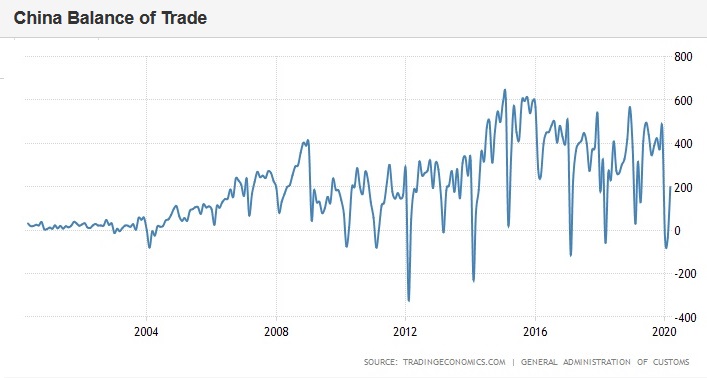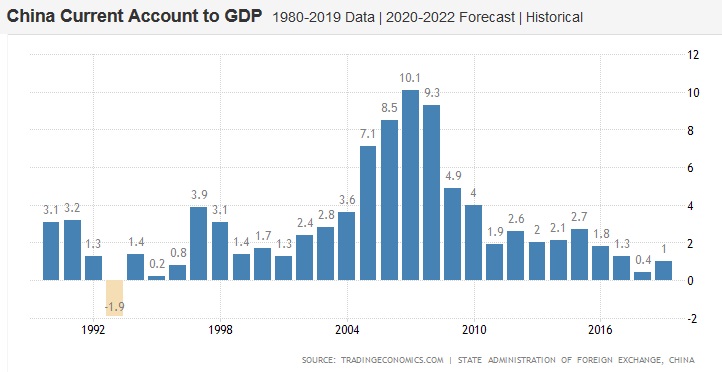The takeover by General Secretary (2002-2012) Hu Jintao 胡锦涛 (b. 1942) and Prime Minister (2002-2013) Wen Jiabao 温家宝 (b. 1942) signified a paradigm shift back to subsidizing agriculture and towards the tackling of specific problems like health insurance, robust industrial policies, or reversing environmental degradation. A better social policy in particular would be a measure to remedy the outcome of Zhu Rongji's concession to carry out a reform with losers.
Hu Jintao created a broader definition of development and coined the term "scientific outlook on development" (kexue fazhan guan 科学发展观), a term encompassing the principle of "the people foremost" (yi ren wei ben 以人为本)—expressed by the slogan of the "harmonious society" (hexie shehui 和谐社会)—and outlooks on comprehensive (quanmian fazhan guan 全面发展观), balanced (xietiao fazhan guan 协调发展观), and sustainable development (kechixu fazhan guan 可持续发展观). This basically meant a renunciation of Deng's paradigm of boundless growth. Economic expansion by all means had been focusing on (export-oriented) manufacture and investment, and had neglected the issues of domestic consumption, the service sector, and the creation of a sustainable mode of economy. The first twenty years of reform had resulted in overall wealth, but with severe imbalances.
The Eleventh Five-Year Plan (Shiyi wu guihua 十一五规划, 2006-2011) shifted the economic focus from Deng Xiaoping's "getting rich first" (xian fu qi lai 先富起来) to Hu Jintao's "common prosperity" (gongtong fuyu 共同富裕, a term coined by the economist Hu Angang 胡鞍钢) (Fan 2006). It addressed imbalances and changed the term "plan" (jihua 计划) to "programme" (guihua 规划) in order to point at the strategic intention. Privatisation proceeded, including that of TVEs, leading to a relation in total urban employment in the manufacturing sector (as of 2007) of 60 % private enterprises vs. 15-20% in the state sector. In the field of services, the state sector occupied 77 % (Ebbers 2019: 63).
Yet in total, the Hu/Wen era did not experience substantial changes in the reform agenda, perhaps because the economy in general profited much from earlier measures and no immediate crisis endangered the Chinese economy as a whole. Even the surviving state-owned enterprises (SOE) returned to profitability, and the number of employees in the state sector has been stable since 2005. The stability of the macroeconomic environment resulted to a substantial part by the effects of the WTO accession of China. The only greater threat to economic growth was the financial crisis of 2007-2008 which the Chinese government countered by massive subsidies to banks and enterprises. Yet critital issues like decent wages for high productivity, social security, education and health, were approached only hesitatingly.
It became more and more evident that the factors labour and capital were not sufficient to keep the economy growing in the long run, all the more as there is still today a labour surplus of more than 70 million people (Ebbers 2019: 67). In order to compete internationally and to escape the middle-income trap, China would have to increase competition, innovation and direct more investments into higher education. Another issue is added value. Today, the productivity level of Chinese firms is just about 25% of US companies (Ebbers 2019: 66). Even in fields like inflation, with a ratio of around zero in 2000 and after the WTO accession no more than 5-6 % (as in 2007, Ebbers 2019: 69), caution is recommended, as the inflation ratio has been influenced by large current account surpluses, credit expansion, and strong investment growth, rather than by productivity in services and the high-tech sector.
The economic growth of China rose to more than 10 % annually after the WTO entry (with a peak of 14 % in 2007, Ebbers 2019: 73), but dropped to 6 % after the World Financial Crisis in 2007-2008. It has remained on this level in the 2010s, with a very stable growth of 6.5 % annually through the decade. The economic growth of the 2000s was to 75 % determined by export and fixed investment in housing and infrastructure. The export share to GDP rose to 39 %, that of investment to 41 % in 2007 (Ebbers 2019: 72-73). Yet the output of the export and investment sectors was rather mediocre if brought into a relation with the immense growth figures. This has to do with the low value added component of these sectors. Manufacturing and the basic construction industry do not create much added value, in contrast to economic sectors where research and development are involved.
The enormous economic growth of the 2000s was not reflected in an equal growth in urban income, nor in the creation of jobs (only 1 % p.a., with a GDP growth of 8 % p.a. on average, Ebbers 2019: 81), or in domestic consumption. While the latter had played the decisive role in the first decade of economic reform and had contributed c. 42 % to GDP in the 1990s, it dropped to 36 % in 2005 (Ebbers 2019: 81). People keep preferring saving over consumption. This widespread attitude in turn created cheap money for the investment sector, with the consequence of increasing overcapacities in many industrial sectors.
The service sector remained underdeveloped and surpassed the manufacturing sector only in 2012 (both contributing 45 % to GDP). It made out only 25-35% of total employment during the 2000s (Ebbers 2019: 82).
 |
| In hundred million US$. Source: Tradingeconomics.com |
Another issue is the growing trade surplus China has developed. It was roughly balanced and fluctuated around 3 % of GDP until the WTO entry, but thereafter exploded to 10 % of GDP. After the 2007 Financial Crisis it dropped to 2 % of GDP, not the least because domestic consumption increased somewhat (Ebbers 2019: 83). In 2007, international trade (current account) stood in a relation of 10 % to GDP, but it sank to c. 2 % in the 2010s.
 |
| Source: Tradingeconomics.com |
The exchange rate of the RMB to the US$ was gradually adjusted in 2005 from 8.3 RMB per US$, and again after the Financial Crisis to a relatively stable 6.8-6.9 RMB per US$ until 2011, when it was allowed to float. This adjustment raised the value of the RMB and dampened somewhat China's trade surplus.
The Global Financial Crisis of 2008 also hit China. The CPC leadership therefore dedided to launch a stimulus package to promote consumption by ten measures (Kuoda neixu shi xiang cuoshi 扩大内需十项措施) encompassing the investment of no less than 4 trillion RMB (586 billion US$).
| 1. Housing projects: construction of rented flats, clearance of urban slums and rural unsafe dwellings, housing for the homeless. |
| 2. Construction projects in the countryside: Safety of drinking water and biogas, construction of roads, electricity, water projects (reservoirs and water transport from south to north), poverty reduction (fupin kaifa 扶贫开发). |
| 3. Construction of transport projects: roads (incl. motorways), railways (mainly in west and southwest China), airports, transport of passengers, of coal from north to south, spread of urban electricity. |
| 4. Promoting the health and education systems, particularly in rural west and southwest China. |
| 5. Projects concerning ecology and environment: urban wastewater and waste treatment, protection of rivers and lakes, protection of (natural) forests, projects to save energy and reduce pollution. |
| 6. Promotion of innovation and structural adjustment in industry and services. |
| 7. Projects concerning region endangered by earthquakes and other natural disasters. |
| 8. Raising incomes by lowering grain prices and subsidies to farmers, support for urban and rural people with lower incomes and retired workers. |
| 9. Enforcement of the application of value-added tax in all regions and business sectors, stimulation for technological advancement in enterprises, overall enterprise tax reduction of 120 billion RMB. |
| 10. Raising financial support: unlimited, but rational (heli 合理) credit for commercial banks, facilitating credits to important projects (zhongdian gongcheng 重点工程), projects targeting the "three rural issues" (sannong 三农), small and medium enterprises and aiming at technological transformation and company mergers and restructuring (jianbing chongzu 兼并重组), and for points of growth (zengzhangdian 增长点) nourishing and stablizing consumption. |
The conclusion of the political leadership at the end of the decade was to speed up the development of a consumption-oriented economy, to address income inequality according to the slogan of a "socialist harmonious society", to reduce pollution, and to deepen structural reforms.